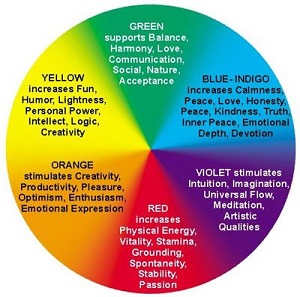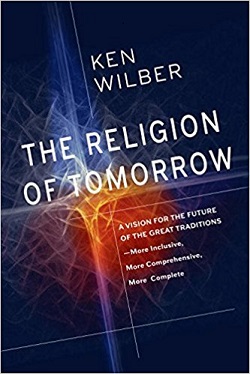|
TRANSLATE THIS ARTICLE
Integral World: Exploring Theories of Everything
An independent forum for a critical discussion of the integral philosophy of Ken Wilber
  Frank Visser, graduated as a psychologist of culture and religion, founded IntegralWorld in 1997. He worked as production manager for various publishing houses and as service manager for various internet companies and lives in Amsterdam. Books: Ken Wilber: Thought as Passion (SUNY, 2003), and The Corona Conspiracy: Combatting Disinformation about the Coronavirus (Kindle, 2020). Frank Visser, graduated as a psychologist of culture and religion, founded IntegralWorld in 1997. He worked as production manager for various publishing houses and as service manager for various internet companies and lives in Amsterdam. Books: Ken Wilber: Thought as Passion (SUNY, 2003), and The Corona Conspiracy: Combatting Disinformation about the Coronavirus (Kindle, 2020). 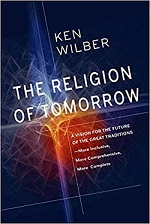 Frank Visser, CLIMBING THE STAIRWAY TO HEAVEN
Frank Visser, CLIMBING THE STAIRWAY TO HEAVENA 7-Part Review of Ken Wilber's The Religion of Tomorrow (2017) Part I: The Involution/Evolution Cosmology Part II: From Atom to Atman Part III: A More Adequate Spectrum of Colors? Part IV: What Is It Like to Be a Super-Nova? Part V: Rational Reasons to Believe in Spirit? Part VI: Is Darwin Really 'On Our Side'? Part VII: Climbing the Stairway to Heaven THE WHOLE SERIES: FREE DOWNLOAD AS PDF Review of "The Religion of Tomorrow", Part III‘A more adequate
| ||||||||||||||||||||||||||||||||||||||||||||||||||||||||||||||||||||||||||||||||||||||||||||||||||||||||||||||||||||||||||||||||||||||||||||||||||||||||||||||||||||||||||||||||||||||||||||||||||||||||||||||||||||||||||||||||||||||||||||||||||||||||||||||||||||||||||||||||||
| INTEGRAL THEORY | SPIRAL DYNAMICS |
|---|---|
| " T H I R D T I E R" | " S E C O N D T I E R " |
| WHITE: Supermind | ??? |
| ULTRAVIOLET: Overmind | AUBERGINE |
| VIOLET: Meta-mind | TEAL |
| INDIGO: Para-mind | CORAL |
| " S E C O N D T I E R " | |
|
TURQUOISE
Integral |
TURQUOISE,
GlobalView
Holistic/Experiential |
|
TEAL
Holistic |
YELLOW, FlexFlow
Systemic/Integrative |
| " F I R S T T I E R " | |
|
GREEN,
Pluralistic |
GREEN, HumanBond
Relativistic/Sociocentric |
|
ORANGE
Rational |
ORANGE, StriveDrive
Materialistic/Achiever |
|
AMBER
Mythic |
BLUE, TruthForce
Absolutistic/Saintly |
|
RED
Magic-Mythic |
RED, PowerGods
Egocentric/Exploitative |
|
MAGENTA
Magic |
PURPLE, KinSpirits
Animistic/Tribalistic |
|
INFRARED/CRIMSON
Archaic |
BEIGE, SurvivalSense
Automatic/Instinctive |
Comparing the two columns of this table, one can now clearly see what changes Wilber has made in the original SD-model:
- BEIGE is replaced by INFRARED
- PURPLE is replaced by MAGENTA
- BLUE is replaced by AMBER
- YELLOW is replaced by TEAL
- “Third Tier” colors have been added
Only RED, ORANGE, GREEN and TURQUOISE have been retained in Wilber's model.
Contrary to the SD-model, Wilber's model explicitly recognizes a Third Tier, which demarcates the transition from personal to transpersonal, "super-integral" or spiritual levels—again, not just a regular stage transition, but one of larger importance. Another "leap", even more momentous than the one from First to Second Tier. Though Graves apparently did speak of a possible Third Tier, he expected YELLOW and TURQUOISE first to be followed by four Second Tier colors, the first three of which were tentatively labeled CORAL, TEAL and AUBERGINE.[4] Thus, the six Second Tier stages would match the six First Tier stages, as some kind of higher "primes" (with Third Tier giving "double primes")—resulting in a rather kabbalistic scheme.
Wilber, however, thought it appropriate to have Third Tier start earlier then Graves imagined:
The Third Tier interpretation of Wilber has been opposed by both Beck and Cowan as non-Gravesian. However, Cowan stated on his website about the existence of a possible Third Tier (which would again consist of six stages, according to Graves): "That such levels would come to be was pure conjecture on Dr. Graves' part as he projected what might be if human nature continued on track."[7] Wilber, at least, seems to have found a meaningful and empirically based re-use of this Third Tier concept, given his life-long study of the transpersonal stages of development and methods of personal transformation.
What might surprise many integral students is that for Wilber the TEAL and TURQUOISE stages are not spiritual in any sense. Using his terminology, they represent the low and high versions of "vision-logic", a form of cognition representative of the mind-body integration of the so-called centaur-stage. The "super-integral" stages of Third Tier are decidedly spiritual in nature.
Wilber provides some (unsubstantiated) data about the prevalence of these Second and Third Tier stages:
More specifically commenting on the classical SD-color scheme, Wilber elaborates on the misplacement (rainbow-wise) of YELLOW and VIOLET—and adds that this misplacement is not without consequences.
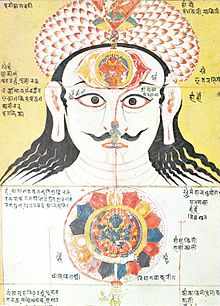
Chakra painting (Nepal, 17th Century)
If this is indeed the case, it highlights the importance of meticulously sticking to the color sequence found in nature. A better color sequence, Wilber feels, would be one in which we go from "raw" and "rough" energies to more "rarefied" and "refined" energies:
Wilber's new color scheme seems to conform to that rule: we go from warm, reddish colors (actually many hues, more on that later) to the more cool, bluish colors, culminating into ultraviolet and white. Note how Wilber appeals to popular notions about color psychology here. An interesting difference is that in classical SD warm and cool colors alternate (which effectively forms the Spiral). Wilber has completely stripped this spiraling motive from his color scheme. (Again, that the stages should show a spiraling sequence between warm and cool colors, or from I-stages to We-stages, is an empirical question we won't go into now).
The Yoga/Tantra color scheme
So let's turn to the color scheme of yogic and tantric psychology, to see if Wilber's new model fares better then classical Spiral Dynamics. A search on the internet for "chakra-psychology" brings tons of images detailing the chakras and their supposed corresponding colors. As far as I can tell, they all confirm to the following arrangement:
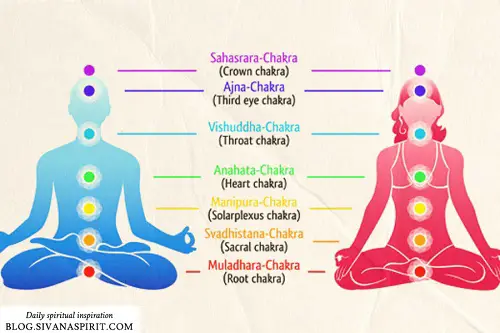
As always, a wealth of historical information is also give on the Wikipedia page on Chakra.[7] The chakra-concept can be found in Eastern traditions (Hindu Tantra, Vajrayana Buddhism, Bon, Qhigong and Indonesian and Malaysian metaphysics) as well as Western schools (Western adaptations of Hindu traditions, Eastern Orthodox tradition of Hesychasm, New age and esoteric groups).
For ease of comparison, let's put the color spectrum next to it, to see if, indeed, rainbow colors have been assigned to chakras here, in the very same order. The spectrum ranges from lower frequencies (Red) or long wavelengths to high frequencies (Violet) or short wavelengths, and the seven spectral colors match the seven chakras one by one. This makes intuitive sense, if the symbolism (or energy behind it?) represents a refinement process ascending from matter to Spirit.

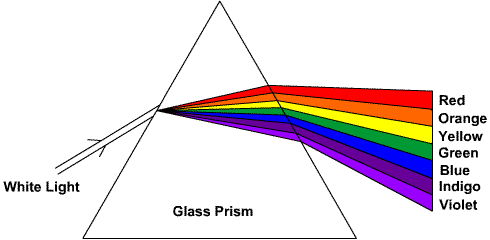
Another Wiki page on the chakras provides us with historical background about the chakras, and how they came to us in the West—and tells us that most contemporary Eastern teachers are using the Western interpretations of ancient texts[8]:
It is the shakta theory of 7 main chakras that most people in the West adhere to, either knowingly or unknowingly, largely thanks to a translation of two Indian texts, the Sat-Cakra-Nirupana, and the Padaka-Pancaka, by Sir John Woodroffe, alias Arthur Avalon, in a book entitled The Serpent Power.
This book is extremely detailed and complex, and later the ideas were developed into what is predominant western view of the Chakras by the Theosophists, and largely the controversial (in theosophical circles) C. W. Leadbeater in his book The Chakras, which are in large part his own meditations and insights on the matter.
That said, many present-day Indian gurus that incorporate chakras within their systems of philosophy do not seem to radically disagree with the western view of chakras, at least on the key points, and both these eastern and western views have developed from the Shakta Tantra school.
The website repeats Wilber's arguments about having the colors right, or you would otherwise risk energetic consequences:
It is claimed to be very important to know the right color tone for a specific area because the wrong hue of color can allegedly do different things to the energetic system. Yet different systems differ in the colors they ascribe. The colors above simply represent, in order, the colors of the rainbow. In other words, all monochromatic colors. (emphasis added)
Wilber's Stage-Chakra Correspondences
Wilber provides stage-chakra correspondences in The Religion of Tomorrowin Chapters 9, 10 and 11, where he discusses the "dysfunctions" of the 1st, 2nd and 3rd tier developmental stages. The stage-chakra correlations are briefly mentioned at the start of each paragraph discussing the separate stages.
When we now add the traditional chakra-colors, based on the research on color terminology we have done above, this results in the following table of correspondences—or should we see "non-correspondences"?:
| INTEGRAL THEORY | CHAKRA-PSYCHOLOGY |
|---|---|
| " T H I R D T I E R " - Super Integral | |
| WHITE: Supermind | Chakra 7: VIOLET CROWN |
| ULTRAVIOLET: Overmind | |
| VIOLET: Meta-mind | |
| INDIGO: Para-mind | |
| " S E C O N D T I E R " | |
| TURQUOISE Integral | Chakra 6: INDIGO THIRD EYE |
| TEAL Holistic |
|
| " F I R S T T I E R " | |
| GREEN, Pluralistic | Chakra 5: BLUE THROAT |
| ORANGE Rational | |
| AMBER Mythic |
Chakra 4: GREEN HEART |
| RED Magic-Mythic |
Chakra 3: YELLOW SOLAR PLEXUS |
| MAGENTA Magic |
Chakra 2: ORANGE SACRAL |
| INFRARED/CRIMSON Archaic |
Chakra 1: RED ROOT |
The obvious color mismatch between these two systems is painful to the eyes. Only the root-, the sacral and the crown-chakras seem to match Wilber's choice of colors; the rest is completely out of synch. Visually, one clearly sees an offset of the chakra-colors Indigo, Blue, Green. and the Yellow-Orange warmer colors. The problem here seems to be that Wilber wanted to keep Green and Orange at such high levels, because much of his cultural analysis hings on these terms.
One wonders why Wilber would claim that his color-scheme exactly matches the color spectrum of the rainbow. While it does better than the SD-model in this respect (but as said, it was never the intention of the founders of Spiral Dynamic to give the colors "any metaphysical significance or derive the colors from chakras or any other system"), there seem to be serious mismatches here.
- YELLOW is missing from the First Tier level
- BLUE is missing from the First Tier level
- The First Tier levels are dominated by RED/ORANGE
- GREEN is out of synch with the Green chakra.
- TEAL/TURQUOISE do not match with INDIGO
It is quite remarkable, for starters, that, except for GREEN, almost all Wilberian First Tier stages are assigned to RED or Reddish colors—from deep-crimson red to various shades of orange. Weren't they "low frequencies of raw, 'violent' color associated with anger, hatred, and so forth"? What if Integral Institute were to release "bio-machines" based on his understanding of the chakra-colors, say, to stimulate the Heart chakra, wouldn't that "backfire badly when any actual energies were used"?
And what on earth has happened to BLUE (throat chakra) and YELLOW (solar plexus), two important traditional colors, which are not only spectral colors but primary colors at that. If I were to design a color scheme that closely matches the traditional colors, I would definitely ensure these are included. Also because, as every painter knows, you can't make either green or orange without yellow on your color palette.
Another way to put this is: in the yoga/tantra chakra-color model, all three primary colors (RED, YELLOW and BLUE) and their secondary colors (ORANGE and GREEN) make up the human personality. Higher qualities are expressed by non-primary (or even secondary) colors INDIGO and VIOLET. This seems quite balanced and in accordance with the light spectrum. Wilber's model, in contrast to this, paints the human personality with one primary color (RED) and two secondary colors (ORANGE, derived from YELLOW/RED and GREEN, derived from YELLOW/BLUE). As said, the primary colors of BLUE and YELLOW are completely missing. Higher qualities are now expressed by TEAL and TURQUOISE (an echo of Spiral Dynamics, but somewhat at odds with the light spectrum, both making up for the absence of BLUE), followed by the super-integral colors INDIGO and VIOLET. The overal reddish-coloring of the human personality is deeply problematic in this new presentation, not only in terms of color theory but also according to the yoga/tantra list of colors.
If accurate and realistic color-matching is so important, and Wilber stresses the point several times in The Religion of Tomorrow, this mismatch needs to be accounted for. The newly introduced TEAL color in no way matches the INDIGO color assigned in yoga psychology to the Third Eye chakra. This would be fatal for any model that places high value on a close correspondence between chosen colors and "natural" colors, especially for the much expected TEAL structure! Only the colors at the extreme ends of the spectrum seem to have some resemblance.
SHOWING YOUR TRUE COLORS
One could of course pragmatically (or desperately?) hold on to Wilber's colors even though they contradict the yoga color schemes, but something doesn't add up here. There simply are no other sources for these chakra-colors then the ones we have pointed to—and they don't support Wilber's choices, even if he claims they do. And it's not a simple matter of "all models are wrong" (or "right") in my opinion. Models can be more and less informative, depending on the context in which they are used. The context at hand is human psycho-spiritual development. In that sense, the original SD-colors seem superior, because of their direct psychological appeal. Wilber justifies his choice of colors indirectly (erroneously, as we have seen) through an esoteric tantric theory about rainbow colors and chakras.
Wilber can carelessly write things like:
But for Shiva's sake, the traditional schemes do have a unique place for YELLOW, and it's definitely not "in the red/orange range"—although that may be true for Wilber's reddish bottom half of the palette, where he seems to have run out of yellow and blue paint. No, YELLOW is traditionally seen as to correspond to the solar plexus or third chakra.
Casually as ever, Wilber writes in conclusion:
Wilber claims he has always been on the chakra-trail ever since his first book—at least implicitly—but why is the alignment so hopelessly wrong, even after four decades?
But calling classical Spiral Dynamics "an inadequate scheme" seems misplaced, given the incoherence of his current color-system:
"Addressing" the classical SD model while ignoring the meaning of the various colors, and the reasons why they have been chosen, comes across as vandalism—and I understand the strongly negative reactions of the founders of Spiral Dynamics to these efforts. It says much about the other-worldly stance of Wilber that the main reason for his color changes that Wilber mentions, is that their possible use in "biomachines" (e.g. electronic meditation devices) might cause unforeseen effects. Compare this to Spiral Dynamics, which has put much efforts in trying to make a difference in the real world, especially in conflict areas such as South-Africa and the Middle-East. The standard SD colors apparently never posed a problem.
But presenting a revised scheme, claiming—without any references to tantric sources, ancient or modern—"I explicitly introduced a more adequate spectrum of colors that match a real rainbow—and thus, according to Tantra, more accurately match the actual energies at these various levels of development", is asking too much of my imagination. Wilber's revised color scheme may perhaps not be "totally off according to the tantric traditions", but it seems to be an awkward hybrid between the original Spiral Dynamics model and the rainbow/chakra color spectrum. Wilber's new color scheme lacks the expressiveness of the Spiral Dynamics colors and the natural accuracy of the rainbow colors.
Given his claims to accuracy, this is an area that seriously needs to be looked into:
- Wilber's new color scheme shows a (kind of) rainbow pattern, as it ranges from red to blue/violet hues.
- However, it doesn't match the color scheme of yoga/tantra tradition at the chakra level, many colors are way off.
- Therefore, if colors should be very stage-specific (for energetic reasons), the new model breaks down.
- It would would only work in a very general sense, since the colors range from warm-red to cool-blue: energizing => soothing => inspiring.
- Compared to SD and the yoga/tantra model the colors of Wilber's model are less distinct and informative, especially in the personal stages.
- The primary colors Yellow and Blue are absent, and Reddish colors are way too prominent, in Ken Wilber's new color scheme.
- The disproportional preponderance of reddish colors in this lower part (covering 4½ chakras!) is a point of concern, both from the standpoint of color psychology and from the perspective of esoteric tantric subtle energy doctrines.
As it stands now, Wilber's new color scheme is neither evocative nor accurate.
NOTES
[1] "Maslows Hierarchy of Needs", www.wikipedia.org
[2] C.W. Graves, "Humanity prepares for a momentous leap", The Futurist, 1974, pp. 72-87.
[3] A historical overview of this period can be found in Albion M. Butters's essay "A brief history of Spiral Dynamics" on this website.
[4] "FAQ Colors and Terminology", spiraldynamics.org (offline, available from archive.is)
[5] "Teal Organizations", www.reinventingorganizationswiki.com
[6] "Levels of Existence", spiraldynamics.org
[7] "Chakra", www.wikipedia.com
[8] "Chakra", psychology.wikia.com.
APPENDIX 1: ALTERNATIVE COLOR SCHEMES
Lex Neale's Integral Relativity Model
An alternative color scheme was suggested in the comments to this essay by Lex Neale, author of Knowing the Knower: The Integral Science of Self (Integral Publishers, 2015) and creator of the Integral Relativity model. (In the comment he only mentions the higher chakras 4-7, so I have provisionally filled in chakras 1-3). He sticks more strictly to the rainbox spectrum and aligns the various Integral colors with the chakras as give below. This seems to be a more natural alignment, given the color mismatches found in Wilber's version. Its view of Second Tier is more differentiated (it now has two colors and chakras allocated to it, matching Teal and Turquoise) and solves Wilber's mis-alignment with Green pluralism and the Heart chakra. However, it introduces new problems by assigning the rational faculties to the solar plexus, which is usually associated with "the center of dynamism, energy, will power (Itcha shakti), and achievement" (Wikipedia), though some traditions explicitly mention the intellect at the level of the solar plexus (see Hill's table given below). Wilber assigns these faculties more reasonably, at least to modern standards, to the throat chakra (of spoken language). Apparently, meanings associated with the chakras vary per tradition. This goes to show that no perfect model existst.
| INTEGRAL THEORY | INTEGRAL RELATIVITY |
|---|---|
| " T H I R D T I E R " - Super Integral | |
| WHITE: Supermind |
Chakra 7: VIOLET
CROWN |
| ULTRAVIOLET: Overmind | |
| VIOLET: Meta-mind | |
| INDIGO: Para-mind | |
| " S E C O N D T I E R " | |
|
TURQUOISE
Integral |
Chakra 6: INDIGO
THIRD EYE |
|
TEAL
Holistic |
Chakra 5: BLUE
THROAT |
| " F I R S T T I E R " | |
|
GREEN,
Pluralistic |
Chakra 4: GREEN
HEART |
|
ORANGE
Rational |
Chakra 3: YELLOW
SOLAR PLEXUS |
|
AMBER
Mythic |
Chakra 2: ORANGE
SACRAL |
|
RED
Magic-Mythic |
|
|
MAGENTA
Magic |
Chakra 1: RED
ROOT |
|
INFRARED/CRIMSON
Archaic |
|
Terri O'Fallon's STAGES model
Another alternative use of stages and colors can be found in the STAGES model, developed by Terri O'Fallon. The STAGES model has been inspired by Ken Wilber's Integral Model, Susanne Cook-Greuter's model of ego-development, Bill Torbert's Action Logic and the spiritual philosophy of Sri Aurobindo (whose terms Wilber used in the past as well, before he amended them in his recent The Religion of Tomorrow to terms of his making, such as "para-mind" and "meta-mind"). Sixteen stages are distinguished, grouped in four Tiers of four stages each. Some (sub)stages have been added, such as rule oriented and transpersonal. Striking is that any association with Spiral Dynamics or the rainbow spectrum has been left behind. Instead, four basic colors are used for the four stages within each of the four Tiers, and these colors/perspectives form a recurring pattern. This is reminiscent of the notion in Spiral Dynamics that the six First Tier memes somehow get duplicated in the next six Second Tier memes—admittedly a speculative notion that needs to be corroborated by empirical evidence. In the STAGES model the repeating pattern is structurally defined, and the Tier boundaries are less arbitrary than in other models. Each tier represents a new world of objects that are available to awareness (e.g. moving from the Concrete to the Subtle Tier includes being able to think about abstractions and systems). Within each tier there are four stages representing four steps of increasing complexity and sophistication: passive, active, reciprocal, and interpenatrative. (For example, the "3.0" or "Expert" level is the passive step in the Subtle Tier.) The passive and active levels focus on individual objects and the reciprocal and interpenatrative levels mark an understanding of collective objects in that Tier. This brings back the idea of alternating individual and collective focus found in Spiral Dynamics, which was stripped out by Wilber. The use of individual, unique colors for the various stages, as is done by all of the developmental models described in this essay, is discouraged, because they distract from the four-step pattern of increasing complexity and sophistication in each tier (O'Fallon, personal communication)
|
|
APPENDIX 2: MORE ON THE CHAKRAS
See also: M.Alan Kazlev, "The Rainbow Theory of Chakras", www.kheper.net, which traces many of these contemporary chakra-color theories to the work of English-born Christopher Hills, a spiritual philosopher and researcher, "co-discoverer of the protein-rich plankton spirulina" (L.A. Times) and author of Nuclear Evolution (1970). (Thanks to Oliver Griebel and Silvio Wirth for pointing me to this page).

"Although the psychological aspects of this theory did not catch on, the idea of matching the seven chakras with the seven colours of the spectrum was so appealing that just about every book on the chakras written since then show the chakras in rainbow colours." (kepher.net)
Another great read: "The 6 Most Important Things You Never Knew About Chakras", www.thewayofmeditation.com.au.
“So, we’ve barely scratched the surface of this subject. No, I’m not kidding. It’s really complex, as you can gather by taking a look at the scholarly literature, like Dory Heilijgers-Seelen’s work, or Gudrun Bühnemann‘s. It takes uncommon patience and focus to even read such work, let alone produce it. So here’s what I hope will be the result of this post: some humility. A few less claims to authority when it comes to really esoteric subjects. Maybe a few less yoga teachers trying to tell their students what the chakras are all about. Heck, I’m humbled by the complexity of the original sources, and that’s with twelve years of Sanskrit under my belt.” (Chad Foreman)
APPENDIX 3: Various Scientific Color Models
Another approach to evaluating Ken Wilber's new color scheme—and spotting the colors that are missing from his palette—is a comparison with the various scientific color models. First, there's the so-called RYB color model (referring to Red, Yellow and Blue as primary colors). It is used primarily in art and design. An alternative color models is the RGB color model (for Red, Green and Blue), which is used in electronic devices such as television and computers. Yellow and Green switch roles here as primary colors, when Red and Blue remain as such. Finally, there's the so-called CMYK color model (for Cyan, Magenta, Yellow and Black), which is widely used in the world of print. Adding Cyan, Magenta and Yellow in print is not enough to create black, at most a grey can be created, that's why black got added to the mix as an extra, fourth "color".
| RYB | RGB | CMYK |
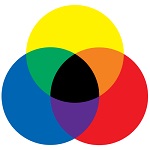
|
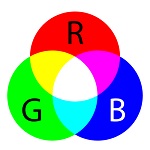
|
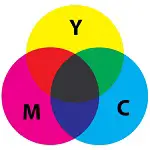
|
| Subtractive | Additive | Subtractive |
All these models present the colors in a circle or wheel, not in a ladder or spectral form, which is an interesting feature. Alternatively, they can be presented in the form of a triangle, with the primary colors on the three corners. This allows for a wide range of color mixtures, which a lineair presentation will not easily accommodate.
The RYB color model is called "subtractive", in that colors absorb light and reflect what remains. In contrast, the RGB color model is called "additive", in that the colors add up when mixed. The three primary RYB colors create black when mixed. All three RGB colors together create white. And the CMYK model is called subtractive as well, because it it is based on reflected light from the printed page.
A word on tertiary colors. According to Wikipedia, "a tertiary color is a color made by mixing full saturation of one primary color with half saturation of another primary color and none of a third primary color." Other sources define them as "Tertiary colors are intermediate colors that are made by mixing equal concentrations of a primary color with a secondary color adjacent to it on the color wheel." This is a bit easier to realize on a web page, so we will follow that definition below.
| PRIMARY COLOR | SECONDARY COLOR | PRIMARY COLOR |
|---|---|---|
| RED | ORANGE | YELLOW |
| YELLOW | GREEN | BLUE |
| BLUE | PURPLE | RED |
| PRIMARY COLOR | TERTIARY COLOR | SECONDARY COLOR |
|---|---|---|
| RED | VERMILION | ORANGE |
| ORANGE | AMBER | YELLOW |
| YELLOW | CHARTREUSE | GREEN |
| GREEN | TEAL | BLUE |
| BLUE | VIOLET | PURPLE |
| PURPLE | MAGENTA | RED |
The RYB Color Wheel
Wikipedia presents us with nice graphics of color wheels. Here's a RYB version, in which we recognize some of Wilber's new color terms: Magenta, Amber, Teal, and Violet (which he uses respectively for archaic, mythic, integral and spiritual stages):
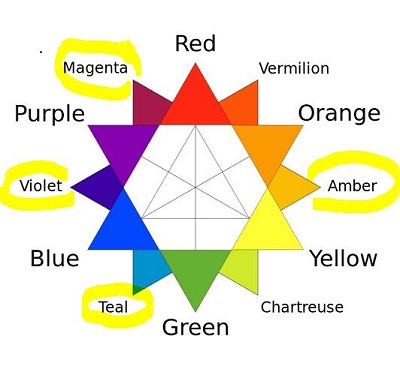
Now if we match Wilber's colors with this spectrum of 12 primary, secondary and tertiary RYB colors (culminating in black as the addition of all colors), we get the following result:
| INTEGRAL THEORY | THE RYB COLOR MODEL |
|---|---|
| " T H I R D T I E R " - Super Integral | |
| WHITE | BLACK |
| ULTRAVIOLET | PURPLE |
| INDIGO / VIOLET | VIOLET |
| " S E C O N D T I E R " | |
| TURQUOISE | BLUE |
| TEAL | TEAL |
| " F I R S T T I E R " | |
| GREEN | GREEN |
| ? | CHARTREUSE |
| ? | YELLOW |
| ? | AMBER |
| ORANGE | ORANGE |
| AMBER | VERMILION |
| RED | RED |
| MAGENTA | MAGENTA |
| INFRARED/CRIMSON | ? |
A few comments, starting from the bottom. Wilber's INFRARED is technically not a visible color, so it does not have an equivalent in the color wheel. RED and ORANGE match perfectly, but Wilber's AMBER is misplaced, it should come after ORANGE to match the color spectrum. Vermillion would have been a better choice to replace BLUE. As mentioned in the main essay, there is a glaring gap in Wilber's First Tier area when it comes to the colors AMBER, YELLOW and CHARTREUSE. Yellow, as a primary color, is completely missing (remember Wilber opined that Spiral Dynamics' placement of Yellow was too "high"? Well, deleting it is going to the other extreme).
With GREEN and TEAL we see a perfect match again, but the next primary color, Blue, is somewhat underrepresented. TURQUOISE is not even a tertiary color, and Wilber probably kept it because of its bluish character and its frequent use in Spiral Dynamics. Plain Blue would have been a better choice, if we are supposed to follow the color spectrum. VIOLET matches again, but PURPLE seems missing in Wilber's model (remember he objected to Spiral Dynamics' placement of PURPLE? Again, deleting it is going to the opposite extreme). Wilber's ULTRAVIOLET is not a visible color. The final color WHITE is inverted to Black in the RYB scheme.
The RGB Color Wheel
The alternative RGB color wheel looks slightly different: while Magenta and Violet are still there, Amber and Teal are missing, and some sort of Turquoise seems to show up as Cyan:
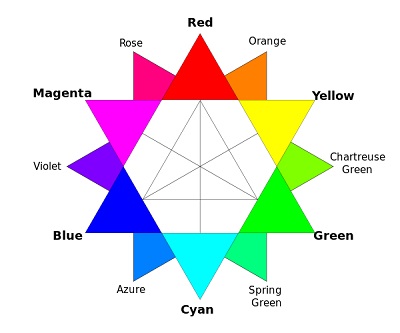
| INTEGRAL THEORY | THE RGB COLOR MODEL |
|---|---|
| " T H I R D T I E R " - Super Integral | |
| WHITE | WHITE |
| ULTRAVIOLET | VIOLET |
| INDIGO / VIOLET | BLUE |
| " S E C O N D T I E R " | |
| TURQUOISE | AZURE |
| TEAL | CYAN |
| " F I R S T T I E R " | |
| ? | SPRING GREEN |
| GREEN | GREEN |
| ? | CHARTREUSE GREEN |
| ? | YELLOW |
| ORANGE | ORANGE |
| AMBER | RED |
| RED | ROSE |
| MAGENTA | MAGENTA |
| INFRARED/CRIMSON | ? |
Not surprisingly, GREEN is much more prominent in this color model (it is after all a Red-Green-Blue model), it has no less than three shades. Given Wilber's allergy to the Mean Green Meme, this is obviously not the palette of his liking. In contrast, RED is much less prominent, even if it has three shades as well, they are less saturated. As was the case in the the previous RYB model, YELLOW is conspicuously missing in Wilber's model when compared to the RGB scheme. Ironically, where in Spiral Dynamics YELLOW is the most prominent color when it comes to our next stage of personal and collective development (the equivalent of the TEAL stage hyped by integralists), it has completely been deleted from the Wilberian color palette. While Teal has no equivalent, Turquoise seems to fit Cyan, though it comes directly after GREEN. AZURE is a new hue, which pushes BLUE another level upwards (from Second to Third Tier), leaving very little granularity for the spiritual VIOLET stages of Wilber's integral model. The final color White is a perfect match again with the RGB scheme.
All in all, the RYB model seems to have a more natural fit to the integral color scheme. I suspect Wilber had a look at the RYB color model, when picking AMBER and TEAL to replace the Spiral Dynamics colors BLUE and YELLOW respectively. A complication here is that all these colors are often printed in books, for which the third, CMYK color scheme is used. Now there is a mystery here you might have noticed going over these different color models. Where the color spectrum is represted by a ladder, the RYB color model is represented by a circle or wheel. How is that possible? Do the extremes—more specifically Magenta and Purple (RYB) or Magenta and Violet (RGB)—literally touch here? Purple isn't a spectral color at all but in painting we are of course free to mix any colors we want, hence Red and Blue make Purple.
APPENDIX 4: A SUGGESTED COLOR REVISION
The important question here (other than "So what?") is, of course: if Wilber's re-coloring was in some ways inadequate, could he have done a better job (assuming for the moment that such a recoloring was warranted)? Let's see what the implications are of the previous colorful considerations. To paraphrase Wilber's own words:
| INTEGRAL THEORY | SUGGESTED REVISIONS |
|---|---|
| " T H I R D T I E R" | " T H I R D T I E R" |
| WHITE: Supermind | WHITE: Supermind |
| ULTRAVIOLET: Overmind | PURPLE: Overmind |
| VIOLET: Meta-mind | VIOLET: Meta-mind |
| INDIGO: Para-mind | INDIGO: Para-mind |
| " S E C O N D T I E R " | |
|
TURQUOISE
Integral |
BLUE
Integral |
|
TEAL
Holistic |
TEAL
Holistic |
| " F I R S T T I E R " | |
|
GREEN,
Pluralistic |
GREEN,
Pluralistic |
|
ORANGE
Rational |
YELLOW
Rational |
|
AMBER
Mythic |
ORANGE
Mythic |
|
RED
Magic-Mythic |
RED
Magic-Mythic |
|
MAGENTA
Magic |
MAGENTA
Magic |
|
INFRARED/CRIMSON
Archaic |
INFRARED/CRIMSON
Archaic |
In "A More Adequate Spectrum of Colors?" I have argued that this re-coloring had some very unfortunate consequences. Since some elements of Spiral Dynamics were retained, but most were changed, a hybrid system arose which was neither true to Spiral Dynamics nor to the features of the light spectrum (or the tantric chakra tradition for that matter). If, as Wilber argued extensively in The Religion of Tomorrow, it is paramount to align the model with the colors of the rainbow, then use the colors of the rainbow, I would say. If not, don't bother.
I would therefore like to suggest following improvements:
- Re-introduce YELLOW as a primary color. It fits naturally between GREEN and ORANGE. Spiral Dynamics used Orange to symbolize "the color of industrial age furnaces at work", but an argument can be made that Yellow fits the description of egoic-rationality better. In color psychology Yellow stands for "Intellectual Intelligence: Our rational and analytical ability to organize information. Logical thinking ability, problem solving, sequential organization, the ability to see inconsistencies, weigh opposites and make judgments." This is the most important change.
- ORANGE replaces the tertiary color AMBER and is moved one level downwards. As the color of mythic-rationality, it fits naturally between magic (RED) and reason (YELLOW). There is no reason anymore to resort to a tertiary color, now that Orange as secondary color can play this role. Again, color psychology tells us orange stands for "Social intelligence: The ability to associate and understand oneself in relationship to others. Leadership abilities, the ability to nurture relationships and maintain friendships, conflict resolution skills, and social analysis, the ability to understand other people." This fits perfectly with Wilber's "mythic-membership stage of development.
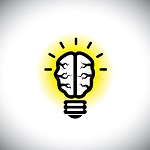
- Re-introduce BLUE as a primary color. It fits naturally between TEAL and INDIGO. Spiral Dynamics used Turquoise to symbolize "the color of earth seen from a meta-level". But isn't our planet equally well describe by the color Blue, since it is mostly covered by oceans? Not without reason the BCC named its earth documentary "The Blue Planet" (2001), which turned into the movie "Deep Blue" (2003) and got a sequal "The Blue Planet II" (2017). It is important to have at least the primary colors included. Turquoise is not even a tertiary color.
- The tertiary color TEAL can be preserved. It fits naturally between GREEN and BLUE, and as a hue of Green-Blue suggests the "beginning" of Blue (cf. "The Teal Altitude marks the beginning of an integral worldview, where pluralism and relativism are transcended and included into a more systematic whole.", Integral Life"). It is currently by far the most popular color in integral circles (cf. Teal Organizations Wiki and the "Teal Organizations Track" of the Integral European Conference 2018).
- The other color assignments seem fine to me: The pre-prepersonal stages of development are all characterized by shades of Red (RED, MAGENTA, INFRARED) and the post-integral transpersonal stages are all characterized by shades of INDIGO and VIOLET. PURPLE, as a secondary color, would fit on the highest colored rung. This feels quite natural and doesn't violate any rules from either color psychology or scientific color theory, as far as I can tell. They form the opposite ends of the color spectrum, as it ranges from infra-red to ultra-violet..
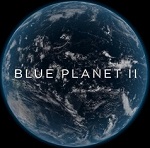
To put the point I would like to make differently:
Wilber objected to Spiral Dynamics' placement of BLUE, YELLOW and PURPLE. But instead of relocating these colors in his own scheme to their proper levels, he abolished them altogether. BLUE became AMBER, YELLOW became TEAL, and PURPLE became MAGENTA. This resulted in a severely skewed and unbalanced model, with two of the three primary colors missing and the personal domains colored almost entirely with RED hues. Re-introducing BLUE, YELLOW and PURPLE restores this balance.
In the diagram below the major suggested revisions are graphically represented:
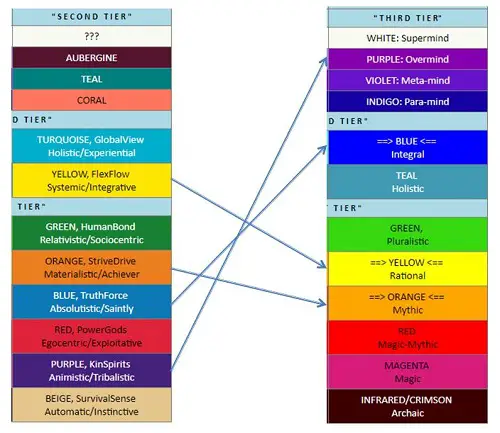
|
One can, of course, question Wilber's original argument that the color scheme should align itself with either the tantric tradition of the chakras, or the spectral colors of science. That presupposes relationships that still have to be proven separately. In the absence of such evidence, the color-psychological associations of Spiral Dynamics do not rely on any such speculations, and are intuitively and pragmatically understood. In the same spirit I have added YELLOW and BLUE, not because of any esoteric considerations but simply because they are primary colors in the RYB color palette and for that reason can't be missed. They also have strong psychological connotations.
Given the current popularity of Wilber's color scheme (and in the context of the review series of his latest book The Religion of Tomorrow, 2017), I felt it clearly opportune to share my color-related deliberations. I don't harbour the illusion that my suggestion for updating Wilber's color scheme will be taken up by the integral community any time soon. Movements tend to defend their cherished notions—and this applies equally to the Spiral Dynamics community as to the integral movement around Ken Wilber. But as a sustained reflection on a large and influential part of integral culture I hope it has its merits.
One can also, of course, counter that all colors are arbitrary, and are useful as long as we know what they stand for, but that overlooks the psychological effect they have on human beings.
To contrast these overly complicated color schemes, just have a look at this simple but effective color wheel below, taken from Pinterest, which uses only six colors in a balanced way, to express deep truths about human nature. It shows that RED and ORANGE cover the physical and emotional energies, YELLOW stands for "personal power, logic, intellect and creativity" and GREEN takes up "harmony, love and communication". In this presentation YELLOW has indeed received its rightful place in the scheme of things. Omitting such a primary color is simply unforgivable. And BLUE-INDIGO and VIOLET then quite naturally stand for more spiritual and transcendent capacities such as "inner peace, meditation and intuition". We all have this rainbow of colors inside us.
It could have been that easy, Ken!
